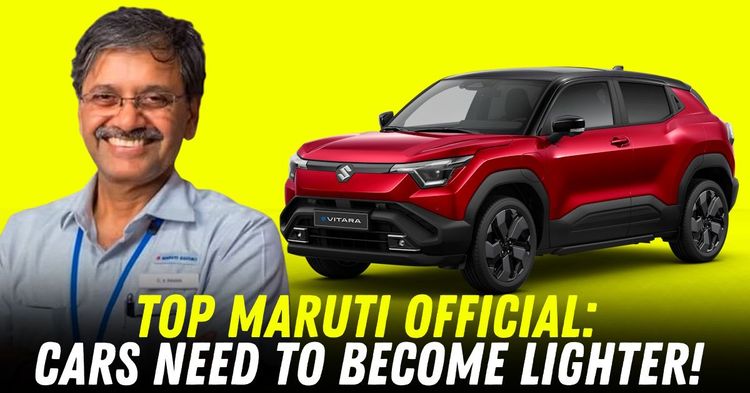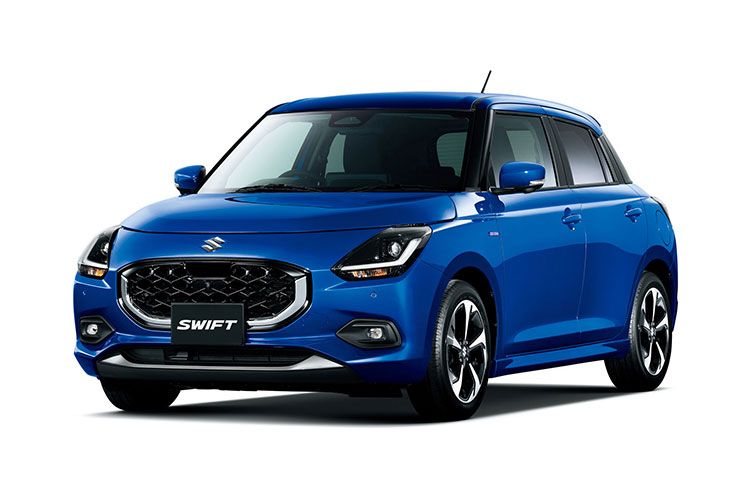Maruti Suzuki Top Official Explains Why Cars Need To Become Lighter


In the race toward cleaner mobility, automobiles are gaining weight just as they are shedding emissions. As carmakers shift to CNG, hybrid and electric powertrains, an unexpected engineering challenge has emerged: rising kerb weight. Maruti Suzuki’s senior executive C. V. Raman, speaking at a recent industry seminar, explained why reducing vehicle weight is no longer just desirable but it is essential.

Adding clean technology to vehicles inevitably results in weight gain. CNG models become heavier due to reinforced gas tanks. Strong hybrids add electric motors and battery packs. Fully electric cars often weigh significantly more than their petrol or diesel counterparts because of large battery systems. While these changes help lower tailpipe emissions, they introduce new complexities that engineers must work around.
This added weight has a direct impact on efficiency and emissions. Heavier cars consume more energy, regardless of the fuel or power source. In petrol and diesel vehicles, that means higher fuel consumption. For EVs, it results in shorter driving range and the need for larger, costlier batteries. As emissions regulations continue to tighten and efficiency benchmarks become tougher, mass reduction is now as important as powertrain innovation.

Car companies are taking this seriously. Every part, no matter how small, is being scrutinised for weight-saving potential. Engineers are now tasked with shaving off grams from components, knowing that even minor changes can compound across the entire vehicle. When a company builds hundreds of thousands of units, a two-gram reduction per part can lead to meaningful results in overall emissions and fuel consumption.
To support this shift, manufacturers are increasingly moving away from traditional materials like mild steel and cast iron. High-tensile steel, aluminium, magnesium alloys and engineered plastics are now common in modern car construction. Even interior components like seat frames, dashboard structures and trims are being redesigned to reduce bulk without compromising strength.

Maruti Suzuki has already implemented many of these changes. The Swift, for instance, has become lighter over generations even as it has grown in size and gained new safety features. By switching to plastic fuel tanks, lighter suspension components and compact seat assemblies, the company has shown that it is possible to make a car safer, more efficient and more refined while still reducing weight.
Part of the success lies in how early the company starts planning. Weight targets are baked into the product development process. Engineers, suppliers and production teams work with defined mass budgets. Weight audits are now routine, and every system is expected to contribute to the overall reduction goal.

Design philosophy plays a role too. Maruti’s approach borrows from minimalist principles that favour compact, efficient use of materials and space. Smaller, simpler, lighter and neater is the mantra followed during development. It ensures that excess is trimmed at every stage, from early sketches to final production.
This is not just about hitting a number on a scale. Lighter cars offer clear advantages. They accelerate better, handle more confidently and stop quicker. For electric vehicles, weight reduction means improved range, faster charging, and the possibility of using smaller batteries, which brings down both cost and environmental impact. For ICE vehicles, the benefit is improved fuel economy and lower tailpipe emissions.
In an increasingly competitive and regulated automotive world, cutting weight is no longer just a clever engineering trick. It is a commercial and environmental imperative. Carmakers that embrace it early and with discipline will find themselves better positioned to meet future norms and customer expectations.
The message is clear. Cleaner powertrains must be matched by lighter structures. It is not enough to remove emissions from the exhaust. The industry must also remove unnecessary kilograms from the chassis. As C. V. Raman rightly pointed out, the vehicles of the future will need to be as lean as they are green.
Via ACP